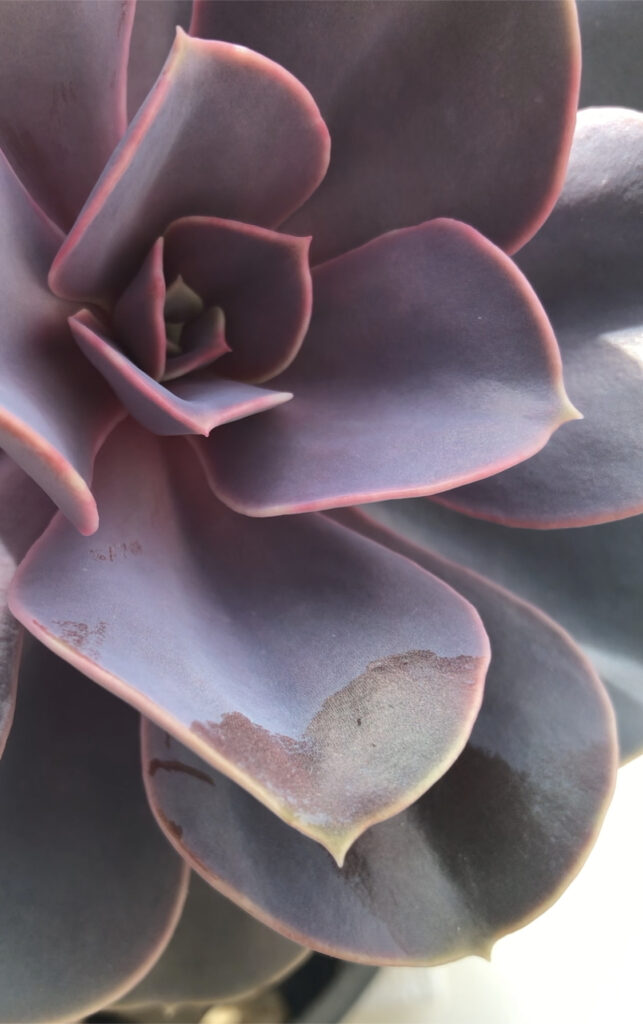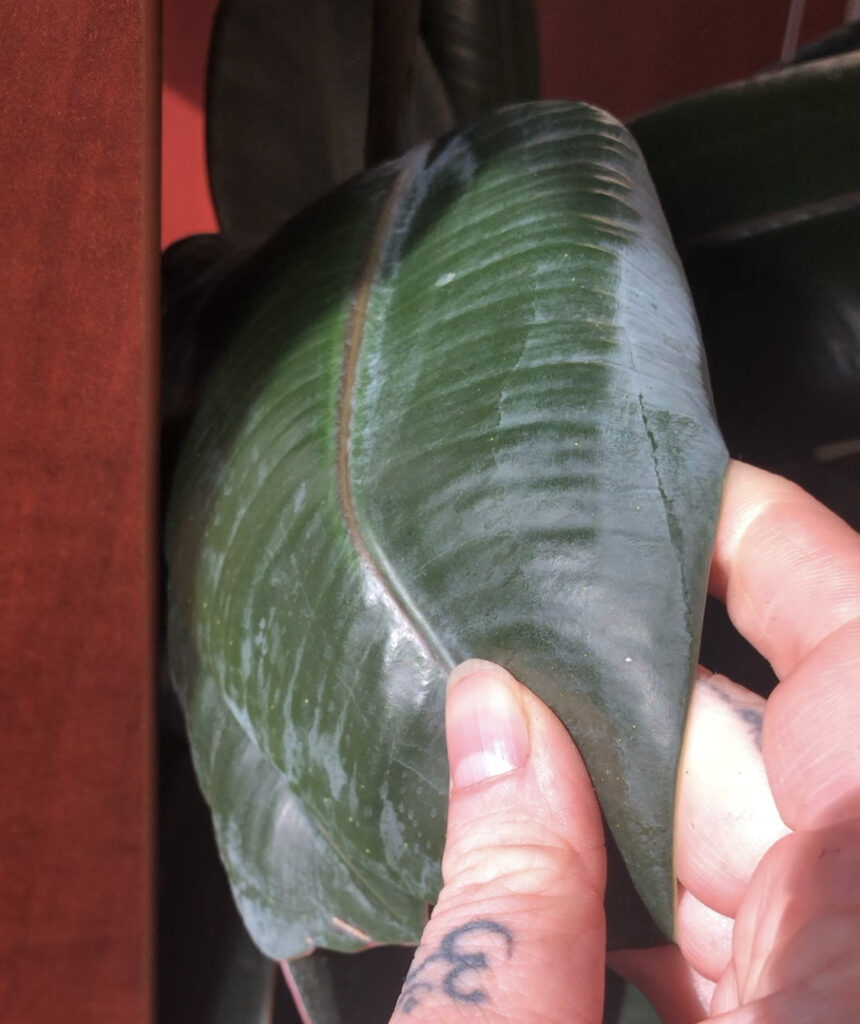- Canada’s Growing Zones Are Changing 2024 - January 12, 2024
- Attracting Wildlife To The Garden - May 16, 2023
- How To Garden Near A Septic Tank - May 9, 2023
Ever wonder why some plants have a whitish bluish milky film on the leaves? I recently saw this happening on my Ficus rubber tree. It came to the realization that many houseplants owners may not understand what exactly this milky leaf film may be. Let’s look at exactly what this milky film we find on kale or succulents is. How to treat it or if we should simply leave it alone.
If you are new to this blog my name is Ashley and I am a soil scientist. I am located in a Canadian Zone 3 and a USDA Zone 4. I write articles, make YouTube videos, Instagram & Facebook posts all designed for Canadians and Cold Climate gardeners using science-based methods. If you are looking for anything specific be sure to let me know in the comments down below.
Why Does My Ficus Have A Blanket Of White Waxy Film/Deposit
This blanket of white waxy film on your ficus leaves is latex. This white milky deposit is completely natural and harmless. You actually don’t need to remove this from the plant because it is harmless.
Is The White Wax On Plant Leaves Fungi?
At the initial look it kind of seems as though it may be fungi growth. Almost like a powdery mildew of sorts for indoor plants. However that is not the case. This blog post to look at exactly what the milky film is on a plant leaf is and why it’s actually beneficial in some cases. For some ideas of homemade pesticides that work click here.
Sunblock For Plants
For lack of a better term it is like sunblock. This sunblock like substance can come in two different forms depending on the plant. We will go into exactly what each version looks like. And why we should leave it attached to our plants whenever possible.

What Is Farina & Should You Wipe It Off?
The first form of this wax is typically found on succulents. It is the dusty look or muted look that succulents can get. This muted look is caused by a sunblock called Farina. Farina is much different than the other type of sunblock we will be speaking about. This type found on succulents actually is produced by tiny crystals. These crystals are formed by the tiny hairs found on the plant’s cuticle.
Farina is not replaceable after it has been wiped off. If it does come back it can take many many months. It helps not only repel the UV rays but also prevent water entering the plants. This is done through its hydrophobic nature.
What Is The Purpose Of Farina?
This is what causes the water to pool on top of a succulent. The only time I would be tempted to remove this wax coating would be when the plant is in a low light scenario.Because it filters out UV rays we would want to remove the wax to ensure as much UV is captured as possible.
Why I Personally Remove The Farina
For example in the winter months here in Canada, I do you remove the wax. I also do not grow my succulents under any sort of grow light. And I do not have a South facing window to locate the plants in. This means I need to capitalize on as much light as possible. If i had these in full sun i would leave the wax in place
Epicuticular Wax vs. Farina
The other form of wax that you can find on plants such as kale, rubber trees, and An array of others is called Epicuticular wax. Epicuticular wax is a coating of wax that forms a white or bluish silver film on the leaves.
Epicuticular wax consist of tiny microscopic crystals that form on the cuticle of a plant’s surface which help their water repellency, Keeping water inside the leaf, filtering UV light, preventing insect damage, and protecting from disease.
The Epicuticular wax serves a very similar purpose to the farina. However you can wipe it off and it will come back over time. This however may not be in your best interest because it does help prevent against called disease and bugs.

It is common to see this form of wax on the outside of things such as apples. This helps protect the apple from the outside environment. You will also commonly see this wax on kale leaves for example.
Epicuticular wax is a coating of wax covering the outer surface of the plant cuticle in land plants. It may form a whitish film or bloom on leaves, fruits and other plant organs. Chemically, it consists of hydrophobic organic compounds, mainly straight-chain aliphatic hydrocarbons with or without a variety of substituted functional groups. The main functions of the Epicuticular wax are to decrease surface wetting and moisture loss. Other functions include reflection of ultraviolet light, assisting in the formation of an ultra hydrophobic and self-cleaning surface and acting as an anti-climb surface
Wikipedia
Outside Plants Vs. Indoor Plants With Wax Layer
In an outdoor scenario I’d advocate for leaving this waxing place. Especially if it is in a garden setting it may help you prevent disease and pests. However in an indoor setting such as with my rubber tree it may be in your best interest to remove.
This again goes back to the fact that it does affect the amount of UV light that the client is allowed to capture. Meaning in a winter scenario such as what we find in Canada it may be in our best interest to remove the sunblock.
You’ve officially learned what the bluish whitish wax is on the outside of your plant leaves. Hopefully this has encouraged you to stop with the way that wax when it is ideal for the situation. Be sure to check out my YouTube video on the wax found on leaves for more information.
Let me know in the comments what plants you see as wax on and whether or not you wake it off.
